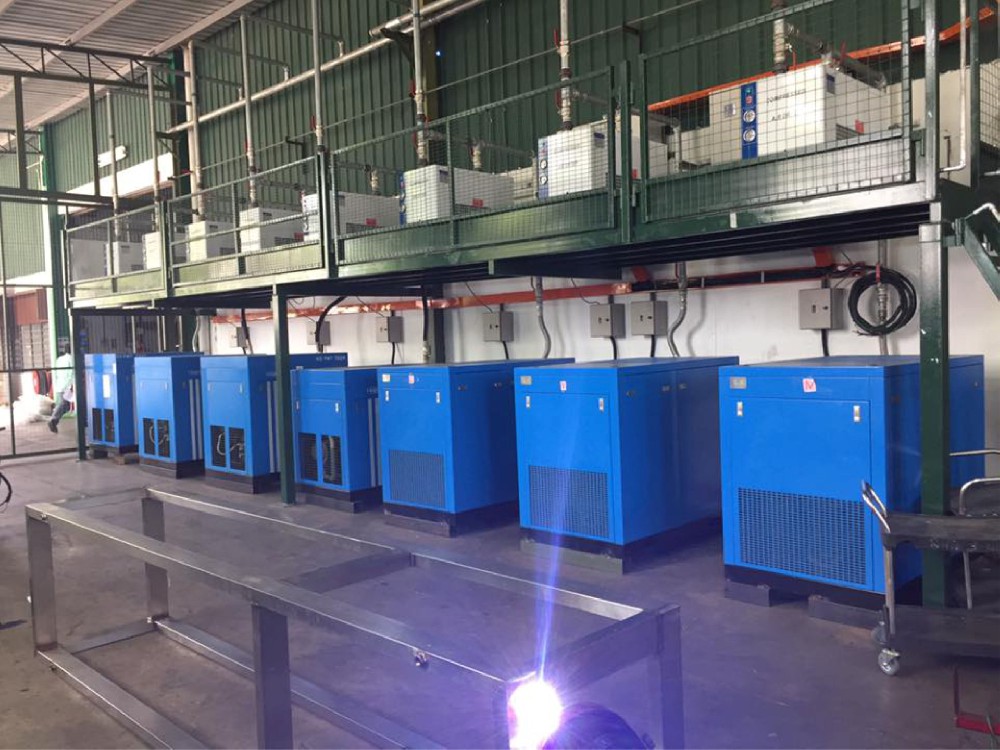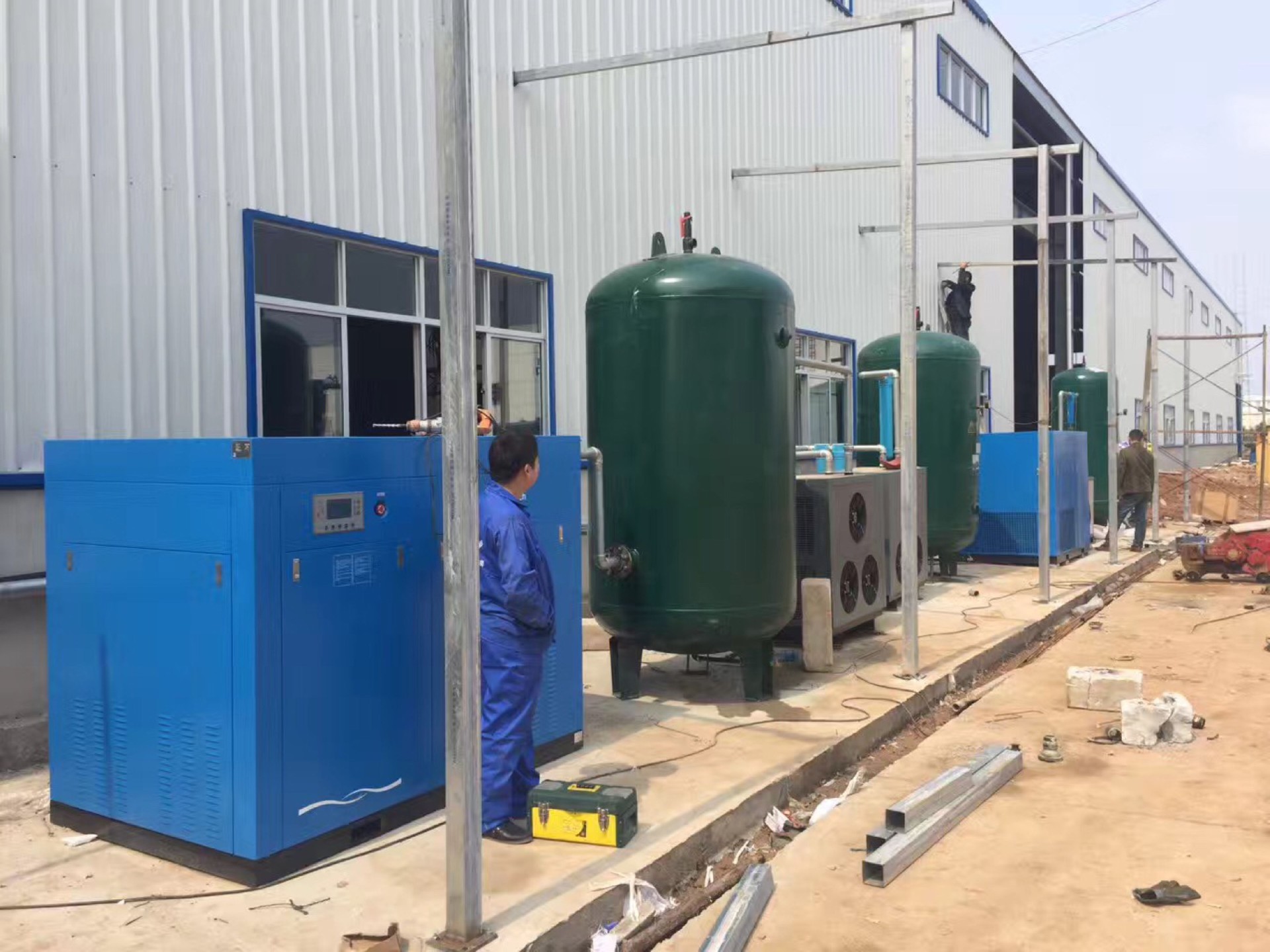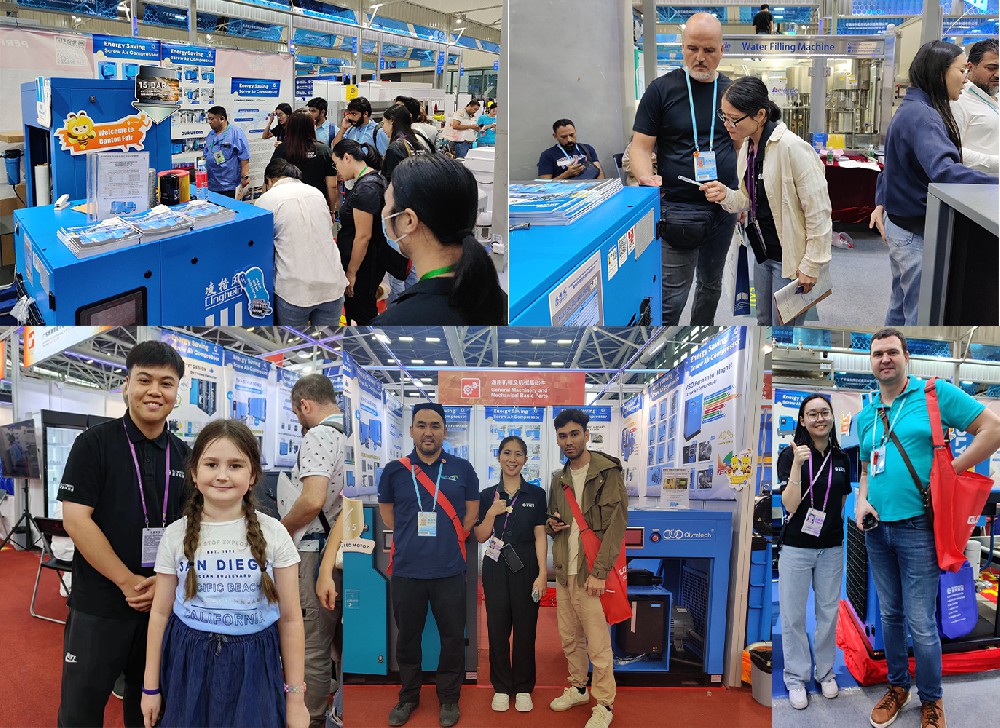The Operating Principle and Advantages of Oil-Injected Screw Air Compressors
- Date:2023-08-16 14:26:13
- Views:795
The advancement of industries heavily relies on machinery, and the operation of machinery demands robust power support. In modern industries, numerous sectors necessitate the use of compressed
air to provide essential power for production. Industries such as manufacturing, construction, petrochemicals, and mining extensively employ oil-injected screw air compressors to compress air to the
required pressure. These compressors employ oil injection to atomize the compressed air, endowing it with enhanced energy and flow rates. So, what is the working principle of oil-injected screw air
compressors, what advantages do they offer, and where are they precisely utilized?
1. Introduction to Oil-Injected Screw Air Compressors
Oil-injected screw air compressors are a common type of industrial air compressors, typically comprised of components such as the compressor body, motor, oil separator, oil cooler, oil filter, air cooler, and control system. Among these, the compressor body stands as the core element of the oil-injected screw air compressor, comprising the main casing, rotors, stators, oil pump, and cooler.The motor provides power, while the control system governs the operation of the entire compressor.
2. Working Principle of Oil-Injected Screw Air Compressors
Understanding the working principle of oil-injected screw air compressors entails grasping four distinct phases:
(1).**Intake Phase**: Screw-type air compressors lack intake and exhaust valves. Intake is regulated solely by adjusting valve openings and closures. When the spaces between the rotor grooves of the main and auxiliary rotors align with the casing's intake opening, a substantial space is available. This allows the free flow of external air into the rotor grooves. As the air fills the grooves, the rotor's intake side moves away from the casing's intake, sealing off the groove. This marks the "intake phase."
(2) **Sealing and Conveyance Phase**: Once intake is complete, the rotor peaks of the main and auxiliary rotors seal against the casing. This prevents the outflow of air from the grooves, constituting the "sealing phase." As the rotors continue to rotate, their peaks align with the grooves at the exhaust end, facilitating conveyance, known as the "conveyance phase."
(3).**Compression and Oil Injection Phase**: During conveyance, the mating surfaces gradually reduce the groove space between the peaks and the exhaust port, compressing the air within the grooves and increasing pressure. Simultaneously, lubricating oil is introduced into the compression chamber, mixed with the compressed air.
(4).**Exhaust Phase**: When the rotor's exhaust port aligns with the casing (at high compression pressures), the compressed air is expelled. As the mating surfaces of the rotors and the casing'sexhaust port align, the groove space becomes zero, completing the "exhaust phase." This signals the start of a new compression cycle.
3. Advantages of Oil-Injected Screw Air Compressors
(1). **High Efficiency**: Utilizing screw compression technology, oil-injected screw air compressors can rapidly compress air to the desired high-pressure gas, enhancing operational efficiency.
(2). **Stability**: The closed structure of oil-injected screw air compressors, along with high-quality components and rigorous manufacturing processes, effectively prevents air leakage and the ingress of impurities, ensuring compressor stability.
(3). **Energy Efficiency**: By spraying lubricating oil for cooling and lubrication during operation, oil-injected screw air compressors reduce frictional resistance, consequently lowering energy consumption.
(4). **Low Operating Costs**: These compressors use the pressure differential they generate to continuously inject lubricating oil into the compression chamber and bearings. This simplifies the mechanical structure, necessitating only periodic replacements of lubricating oil and consumables. Consequently, maintenance costs are low, reducing overall operating expenses.
4. Applications of Oil-Injected Screw Air Compressors
- **Industrial Sector**: Oil-injected screw air compressors find widespread use in industrial production lines and automated control systems. For instance, in the rubber and plastic industries, the compressed air they provide is employed in cylinder and instrument equipment as a driving force.
- **Mining**: These compressors serve as power sources for pneumatic tools, making them indispensable in mining operations, mine ventilation, and other related areas.
- **Construction**: Oil-injected screw air compressors are used in the construction field to compress air for driving equipment, lifting devices, and more. Their applications span from house construction to road repairs, tunneling, and railways.
- **Agriculture**: In the agricultural domain, these compressors power agricultural machinery and facilitate pesticide spraying.
As a common pneumatic equipment, oil-injected screw air compressors offer benefits such as efficiency, stability, energy savings, and low maintenance costs. Consequently, they have gained widespread usage in industries, mining, construction, and agriculture. Opting for a reliable oil-injected screw air compressor is crucial to fulfilling compressed air requirements effectively.








